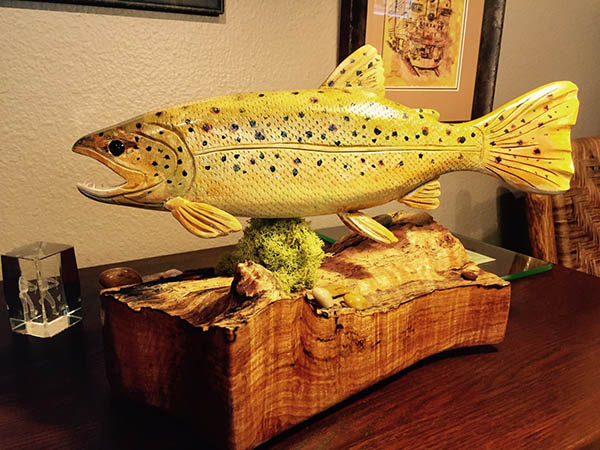
While Tom Lynott has always been interested in art and in wildlife, his turn toward woodworking wasn’t exactly planned. “I really got started during my professional career as an educator,” he said.
“About 1975, I was asked to start up an industrial arts class that would contain woodworking, mechanical drafting, arts and crafts, and so on. I explained to the superintendent of the district I was working in at the time that I had no training, but they wanted me to do it anyway.”
After getting district permission to tour other schools’ woodworking programs around the state of Idaho, Tom started a program for grades seven through nine, “and that got me fired up,” he said.
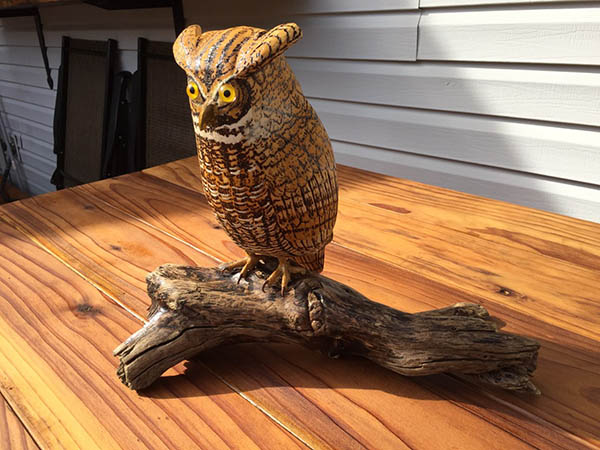
He continued during woodworking even after moving to Oregon and, around the time of his retirement in 2005, began to find a particular interest in carving wildlife. About 70 percent of his current woodworking time is spent in carving, Tom says, although he has also done cabinet work – and leather carving. “I’m still very blessed with good health, but I don’t do the big pieces of furniture anymore simply because of the massiveness and the massive nature of moving them around, whereas with the carving, you’re usually working with reasonable pieces of wood; more handle-able, so to speak.”
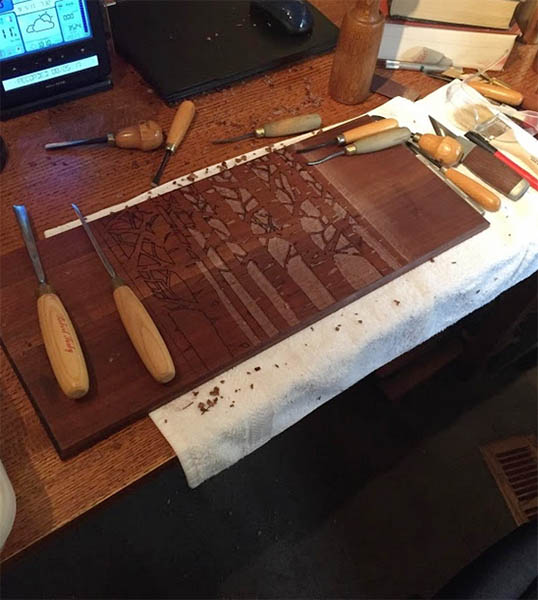
That appears to be a matter of perspective: Tom admits to often scouting for found wood while participating in outdoor activities. He carries a pack frame in order to bring home larger pieces of wood. “At one point in time, there was a burl, it was about five and a half feet tall and probably weighed 70 pounds or so, and I carried it quite a way to get it back to the truck – but it’s been worth it.”
When cut and presented properly, Tom says, burls often look to him “like the waters in a trout stream.” He frequently uses them as the bases for his carvings of fish.
He will also do carving in tilia (basswood), has a fondness for Western red cedar, and enjoys working with reclaimed barn wood which, in Oregon, he said, often turns out to be Douglas fir.
“There’s a lot of wood out here that’s available, including driftwood from the ocean. It makes good bases occasionally for birds I’ve carved, songbirds and shore birds and so forth, to create, in my mind anyway, kind of a natural setting for the carving.”
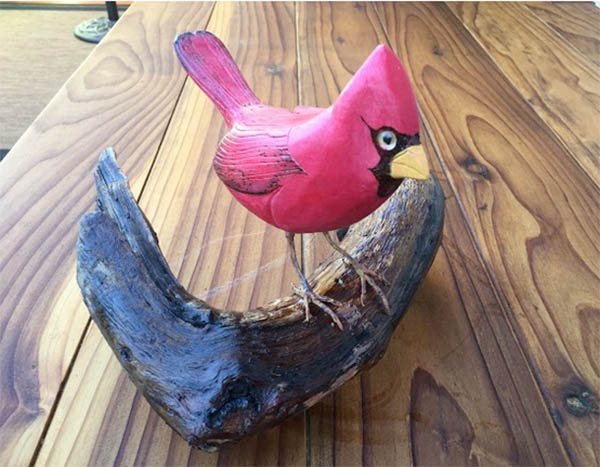
As for the carving itself, “It’s a process I go through to create one of these,” Tom said. “It takes me roughly 30-35 hours from start to finish to complete one of these wildlife carvings, be it a fish or a great horned owl, or whatever it happens to be. I rough out with the band saw and then I do the fine carving with chisels and knives and saws, a wide variety.”
To create the specific species, Tom will sometimes re-create “trophy” fish for clients, based on a photo and statistics such as size, weight, etc., but he also draws on his own memory, plus photographs and other resources. “A lot of it is from memory, probably most of it: the shape and the general feel of the movement of the fish I’m trying to get,” he said.
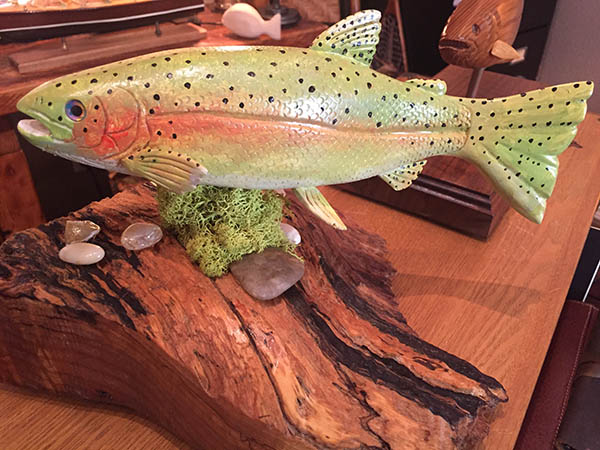
A fly fisherman for at least 50 years and a fly tier for at least 40, Tom says he’s probably caught more rainbow trout than any other fish, and they are likely his favorite to carve, as well as to paint.
“When I paint I use brushes. I do not use an airbrush. I use brushes and highlighters, whatever I can get my hands on.” Generally, he uses acrylic paints, but will choose other options in order to get the effect that he wants. In the past few years, Tom has also been using pyrography pens to enhance his carvings.
The appeal of woodcarving, for him, Tom said, “I think it’s just the whole ethic of it: the smell of the wood, the tactile nature of the material. I love working with good tools, which I have a plethora of. And I enjoy sharpening tools. So, it’s a combination of the things that conspire to allow you to do and to create whatever it is you want to create.”





